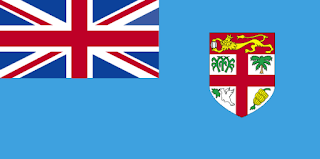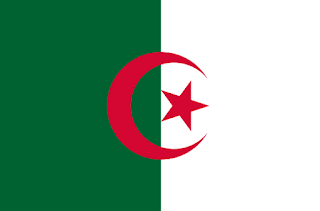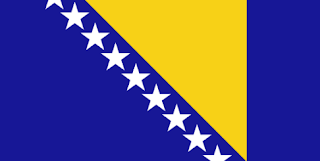FACTS ABOUT FIJI
AMAZING
FACTS ABOUT FIJI
1.
Suva is the capital city of Fiji.
2.
The total population of Fiji is 920,938.
3.
The natives of Fiji are called Fijians.
4.
The Fijian dollar (FJD) is official
currency of Fiji.
5.
Fiji’s main sources of foreign exchange
are sugar exports and its thriving tourist industry, which along with its
abundance of minerals, fish, and forests, gives it one of the most developed
economies in the Pacific.
6.
Fiji became an independent country on 10th
October, 1970.
7.
The first word in the native Fijian
language you’ll need to learn is Bula, which means “hello”, because you will
hear it everywhere. These friendly people will also greet you in English, which
almost all of the population speaks as well.
8.
Those who enjoy outdoor adventures will
find great walks and hikes in the Sigatoka Sand Dunes National Park, the sandy
Natadola Beach, or the Lavana Coastal walk from the beach to the waterfall.
There are also several zip line opportunities available.
8.
9.
Hire a boat to spend the day on the
water diving in the Great Astrolabe Reef coral reefs and snorkling along the
beaches.
10.
Take the kids to the Big Bula Water Park
or hike to one of the waterfalls or caves on the islands.
11.
Be sure to visit the Kula Eco Park where
you can feed young sea turtles and hold iguanas and young snakes. Don’t be
afraid to handle them; there are no venomous snakes in the Fiji Islands.
12.
Accommodations range from luxury hotels
on the beach to hostels for backpackers that run an economical $8 to $15 per
night.
13.
Fire walking originated on the islands
around 500 years ago but today the ceremony is usually practiced as cultural
shows that appeal to tourists.
14.
Visit the Garden of the Sleeping Giant
to see the orchids or experience the Sabeto Hot Springs and Mud Pool in Nadi.
15.
Fijian girls learn how to craft pottery
as well as weave baskets and mats while boys learn to carve kava bowls, war
clubs, spears, and the always-popular wooden forks that are sold to tourists as
relics of Fiji’s days of cannibalism.
16.
The original settlers of Fiji, who came
to the islands over 5000 years ago, are now called the Lapita people but were
originally Melanesians and Polynesians.
17.
Fiji’s first settlements were started by
voyaging traders and the first Europeans to land and live among the native
population were shipwrecked sailors.
18.
Fijians were formidable warriors who
built some of the finest boats in the Pacific in their day and time. They
called their home Viti but nearby island Tonga called it Fisi. Captain James
Cook was the first to pronounce it as Fiji and his writings promulgated that
name.
19.
Fijians were also fierce cannibals who
were known for their practice of eating their enemies and making human
sacrifices. The ferocity of their lifestyle deterred European sailors from
going anywhere near their coastal waters. Fijians now regard those years as “na
gauna ni tevoro” (the time of the devil).
20.
With the arrival of Christian
missionaries, cannibalism began to wane. The last known victim was himself a
missionary. Thomas Baker made the mistake of accidentally touching the head of
the village chief, an insult tantamount to a declaration of war.
20.
21.
The Dutch and British began to explore
the islands in the 17th and 18th centuries. In 1874 the British subjugated Fiji
as a colony and began the large scale cultivation of sugar cane there in the
1880s.
22.
In order not to interfere with the
Fijians’ native way of life, contract labor from India was brought in to work
in the sugar plantations. More than 60,000 indented workers arrived before the
practice ended in 1920. Later these Indian transplants would lead to conflicts
in the islands’ government.
23.
After 96 years of British rule, Fiji
became independent in 1970 but remained part of the British Commonwealth.
24.
In 1987, a military dictatorship took
over the country to prevent an Indian-dominated party from controlling the
government. This triggered a larger exodus of Fijians of Indian origin from the
country. Today the population is 40 percent Indian.
25.
Fiji continued to be controlled by one
military coup after another until a democratic election was finally held in
September of 2014.
26.
Village groups own over 80 percent of
Fiji’s land, which is called Native Land, and use it for their village site and
as a nature reserve.
27.
Villages are generally self-sustaining.
They have a chief as their leader and each has a community center. Tourists may
visit them but must bring a gift of kava with them and present it to the chief
for the welcoming ceremony, known as the “sevu sevu”.
28.
Visitors are welcomed with white talc
powder on their faces and leis of flowers and leaves from the villagers. Ladies
should leave their jeans at home and wear modest clothing, like a traditional
Fijian sarong (a “sulu”) to show respect for the residents and chief.
29.
Only the village chief is allowed to
wear a hat and sunglasses. You must remove yours, please. You may also be
required to remove your shoes in order to enter homes or other buildings.
30.
The village women play a game on New
Year’s Eve called “veicaqemoli” (kick the orange). Played by two teams, the winning
team must give gifts of new garments to the members of the losing team so
there’s really more incentive to lose than to win.
31.
The Meke is a celebration of culture
through traditional storytelling and dancing using songs that is performed at
Fijian festivals. It is performed even more frequently during cultural shows at
tourist resorts.
32.
Rugby is a national obsession. The
national rugby team used to perform the Cibi (pronounced “thimbi”) before their
matches. The Cibi is, appropriately enough, a war dance. It has now been
replaced with their “mBolay!” war cry.
33.
The Fijians have a gift-giving culture.
For a community ceremony one brings a large quantity of food. This food is also
accompanied by gifts like bark cloth or whale’s teeth or kava (the national drink.)
Ceremonies include village marriages and religious festivals.
34.
Typically village households contain
extended families, including a nuclear family with in-laws and possibly other
grown unmarried children. The cultural frowns upon elderly people living alone
and uncared for.
35.
The 180°meridian, or International Date
Line, runs through the island of Taveuni in Fiji. On that island there is a
site where you can stand with one foot in today and the other in yesterday.
36.
Traditional Fiji meals include relishes,
starches and a beverage. The starches include yams, taro, sweet potatoes and
manioc. The relishes include meat, fish, seafood and leafy veggies. Water is
the typical beverage of choice although hot tea with lemon leaves is also
served.
37.
The traditional cooking method in Fiji
is called lovo. Food is wrapped in palm fronds and banana leaves and roasted in
an earthen pit lined with extremely hot stones. Pork, chicken or fish is placed
in first on the bottom. Root crops like cassava, wild yams and taro cover the
meat then the pit is filled with dirt and left to cook for three hours.
38.
Many islanders raise their eyebrows as a
non-verbal way of saying “yes”.
39.
Fiji has comparatively large armed
forces and has been an active participant in numerous major U. N. peacekeeping
missions throughout the world.
40.
One of Fiji’s international sports stars
is professional golfer Vijay Singh. He is the winner of three major
championships.
41.
Speaking of the Fijians’ love of gift
giving, the most precious gift of all to give on ceremonial occasions is sperm
whale teeth, presented with a long and formal speech.
42.
An interesting Fijian superstition says
that coconuts have eyes. Furthermore, they watch for certain people on which
they want to fall from the tree. So if a coconut falls on you, you can expect
bad luck for several days, because it picked you specifically to fall upon!
43.
Kava, or Yaqona, is the national and
traditional drink. Made from the powdered root of the Yoqona bush, it is mixed
with water in a bowl called tanoa. Guests must clap before and after drinking
from the dish.
44.
Kava is believed to have medicinal
qualities and is used to treat: headaches, colds, insomnia, and anxiety. It has
a bitter, tongue-numbing, unsweetened coffee taste. Visitors to villages are
expected to present gifts of kava to the chief upon arrival.
45.
Fiji Exports:
sugar, garments, gold, timber, fish, molasses, coconut oil, and mineral water.
46.
Fiji Imports:
manufactured goods, machinery and transport equipment, petroleum products,
food, and chemicals.
47.
The internet country code for Fiji is .fj.




Comments
Post a Comment